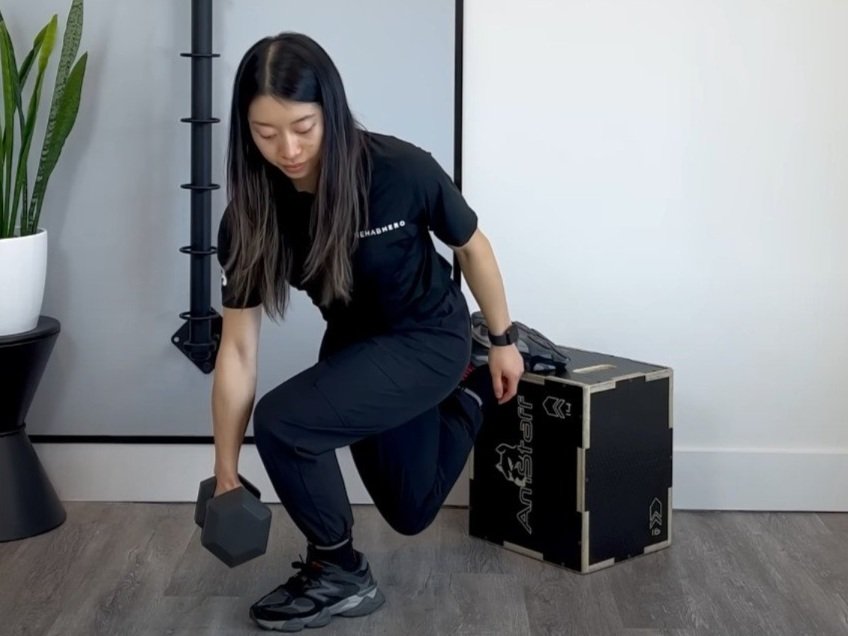The importance of a movement assessment
Why we do movement assessments and why you want one
Learn about how a movement assessment can be one of the most important things to receive during your appointment,
If you've ever been injured, you know that the first question your doctor will ask is "where does it hurt?" But as any experienced athlete will tell you, the answer to that question is only half the battle. Just because you know where the pain is coming from doesn't mean you know why it's there. That's where a movement assessment comes in.
A movement assessment is designed to help figure out not only where your pain is coming from, but also why. By looking at fundamental movements like the squat, lunge, and push up, we can pre-screen injuries before they happen. This allows us to identify and correct any movement deficiencies that may be putting you at risk for an injury down the road.
How Does a Movement Assessment Work?
A movement assessment usually takes place over the course of 1-2 sessions with a physical therapist or other qualified healthcare professional. During these sessions, you will be asked to perform a variety of exercises and movements so that your healthcare provider can assess your range of motion, muscle strength, and overall movement patterns. Based on this assessment, they will be able to identify any areas of concern and develop a plan to correct them.
Why Is a Movement Assessment Important?
As we mentioned before, a movement assessment can help identify potential injuries before they happen. This is especially important for young professionals who may be putting their bodies through more stress than they realize. By catching these issues early on, we can often times prevent them from becoming full-blown injuries that could sideline you for weeks or even months. In addition, addressing these issues now can also help prevent them from becoming chronic problems later on down the road.
The Squat
The squat is a versatile movement that can be used for a variety of purposes, from building lower body strength to improving flexibility. However, the squat can also be an important tool for identifying movement restrictions and dysfunctional patterns. When performed correctly, the squat should involve a smooth, rhythmic movement from the hips, knees, and ankles. However, if any of these joints are not functioning properly, it can cause the squat to break down. For example, if the hips are not able to achieve a full range of motion, it can cause the knees to collapse inward. This can put undue stress on the knee joint and potentially lead to pain or injury. Similarly, if the ankle is unable to maintain proper alignment, it can cause the foot to roll inward (pronate), which can lead to issues with balance and stability. By assessing how well an individual can perform the squat, we can identify any potential areas of concern and develop an appropriate plan of action. To learn more about squat mobility read our article about it here.
The Push Up
The push-up is not only a great exercise for developing upper body strength, but it can also be used as a tool for assessing shoulder, elbow, and core stability. By observing how someone performs a push-up, we can get a good idea of whether they have any movement impairments that could lead to pain or injury. For example, if someone cannot maintain a straight line from their head to their heels during a push-up, it may be an indication that they have weak core muscles. Similarly, if their elbows collapse inward during the exercise, it could be a sign of poor shoulder stability. By using the push-up as a screen, we can identify these issues early on and take steps to correct them before they cause pain or injury.
The Lunge
The lunge is a staple exercise in many fitness routines and can be very effective in toning the legs and buttocks. However, the lunge can also be used as a tool for assessing unilateral lower body strength and flexibility. By observing how a person moves during a lunge, we can identify imbalances in muscle strength and joint range of motion. We can also compare differences seen side to side which we would not easily identify in movements such as the squat. For example, if a person's knee collapses inward during the lunge, it could indicate a weakness in the muscles that support the knee joint. Similarly, if someone cannot Lunge deeply without pain or discomfort, it could be a sign of tightness in the hip flexors or quadriceps. By assessing these issues early on, we can develop a tailored exercise program that helps to prevent injuries and improves overall performance.
Muscle Testing
Muscle testing is a vital tool that can be used to identify imbalances and compensation patterns throughout the body. When performed correctly, it can provide invaluable insights into how the body is functioning and what areas may need to be addressed. Muscle testing can be used to assess muscle strength, flexibility, and range of motion. It can also be used to identify imbalances between opposing muscle groups. In addition, muscle testing can be used as a baseline test to build upon during an exercise program. By retesting muscles at regular intervals, trainers can gauge the effectiveness of an exercise program and make necessary adjustments. Ultimately, muscle testing is a powerful tool that can be used to optimize both performance and health.
How Can I Get a Movement Assessment?
If you're interested in getting a movement assessment, your best bet is to find a certified strength and conditioning coach, chiropractor or physiotherapist who specializes in this type of testing. Health care professionals such as massage therapists are also qualified if they have additional training (such as certifications in Darby Training Systems or DTS for short). At Rehab Hero, all healthcare providers are qualified to provide a movement assessment in additional to neurological and orthopedic tests. These professionals will be able to properly assess your movement patterns and give you specific exercises to correct any imbalances that they find. To book in with a Rehab Hero qualified clinician in Toronto or Markham click the button below:
Conclusion:
If you're an active young professional, chances are you're always on the go. And while being active is great for your overall health, it also puts you at risk for injuries if you're not careful. That's where a movement assessment comes in. By taking a closer look at how your body moves, we can identify any potential problems early on and help keep you healthy and injury-free for years to come. So if you've been feeling pain in a certain area or just want peace of mind knowing that your body is healthy, consider scheduling a movement assessment with your healthcare provider today.
Written by: Dr. David Song
Dr. David Song is a chiropractor in Toronto with experience working with powerlifting and Olympic weightlifting athletes. He has a passion helping individuals improve their strength training related injuries. Now, he focuses on educating patients in-person and on the internet to help prevent as many injuries as possible.






















